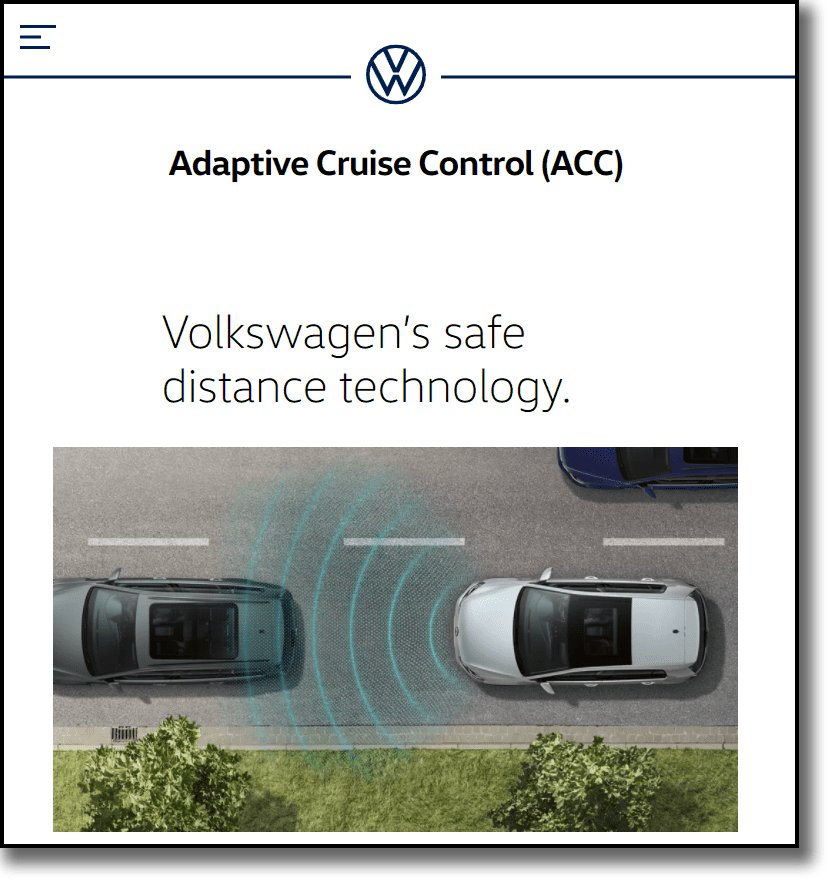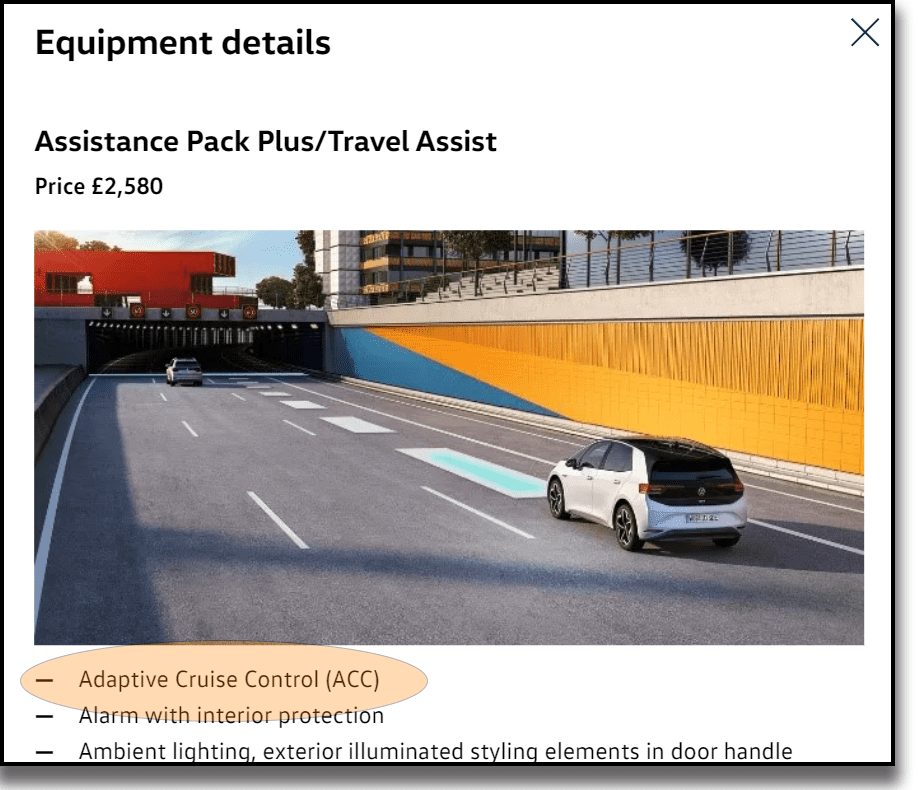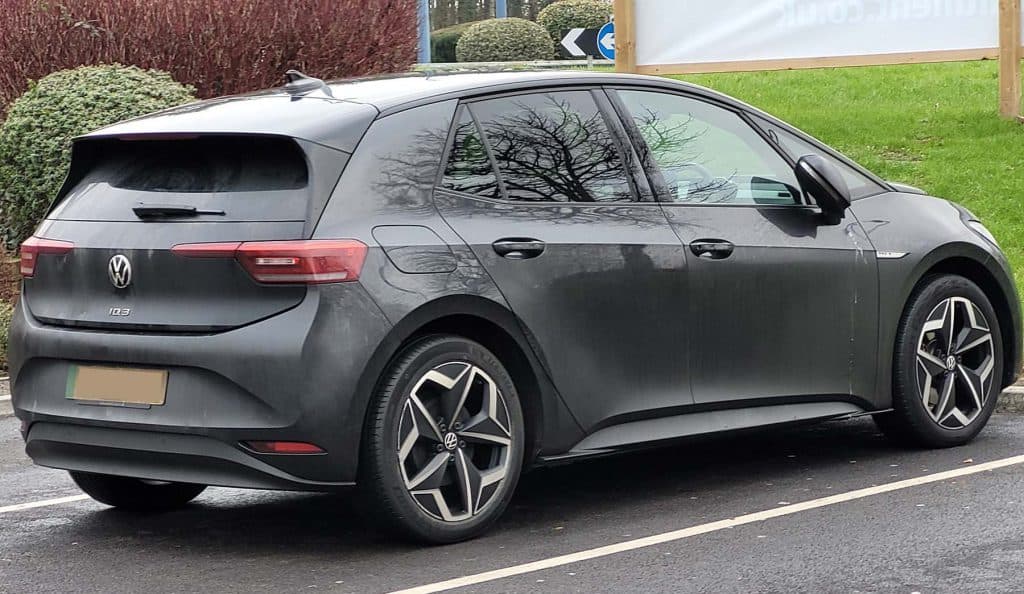In the current age, when we’re buying a new car, we tend to focus a lot of our attention on features and packages. When we were all buying internal combustion engine (ICE) cars, besides digital and technology features, we also took engine and mechanical features into account: cylinders, displacement, horsepower, torque, miles per gallon, etc. There’s been a shift, however, as we move toward electric cars.
With electric cars, we do care about range and battery capacity of course, but we are more fascinated by the software and digitally-driven features that dominate how the car works. Electric cars run so much more dependently on digital algorithms rather than mechanical power, and so what’s really exciting about them is what they can offer us on that front.
The VW ID.3 and VW ID.4 are part of a growing family of electric cars from Volkswagen. They also bring a lot of interesting technology to bear, including their much lauded Adaptive Cruise Control (ACC) system, and Travel Assist features.
The trouble with these 2 features, however, is that many people have trouble telling the difference between them? Are they just 2 names for the same feature? Is there a real difference? Is one for the ID.3 and the other for the ID.4?
In today’s blog, we want to answer these core questions and others.
ACC and Travel Assist – Two Features Explained
First of all, let’s deal with one important part of the core questions, which is that ACC and Travel Assist are two distinct things and are not simply the same thing renamed or repackaged. They are, however, closely related to one another, which is why there is some confusion about them in the first place.
Adaptive Cruise Control (ACC)

This is the older of the two features and is present in both the ID.3 and ID.4 vehicles. ACC is a feature not unique to VW cars, and in other cars might be known by the same or similar name, or something like “dynamic cruise control,” or “advanced cruise control,” and so on.
In essence, ACC is designed to maintain the driver’s speed, but then also adapt the speed according to the traffic conditions ahead. It does this both through braking and acceleration.
Early versions of ACC are limited to these functions, but the latest versions have also been augmented with a radar sensor, a camera and navigation data to help manage how it works according to local speed limits. The navigation data helps the car to calculate any required speed reductions required before hitting bends, roundabouts and intersections.
For clarity’s sake, we should say that ACC is by no means an autonomous driving system. The best way to think of ACC is as a much more advanced and updated version of cruise control that many cars have had for the past few decades.
Travel Assist

Now we come onto the Travel Assist feature. If ACC is an evolution of cruise control, then Travel Assist is a further evolution of ACC. More accurately, it’s a broadening of the scope of ACC to include and combine other features into a new package.

VW explains Travel Assist (also sometimes called Assistance Pack Plus) like a larger package of technology that now includes ACC. Another useful element combined into the package is lane keeping assist.
So what can Travel Assist do, exactly? The first thing to note here is that among the many functions of Travel Assist is the ACC system and its related functions. This is why people have been confused, because all Travel Assist systems include ACC, but not all VW cars with ACC have the wider Travel Assist package.
Travel Assist’s functions include (besides ACC), greater autonomous control of the accelerator, brake and steering, especially when driver inactivity is detected and the car predicts an emergency situation is coming. It’s activated by a button mounted on the steering wheel of your ID.3 or ID.4, symbolized by a car in lane with a speedometer next to it; the bottom-right button of the left-hand control cluster on the steering wheel.
When active, and assuming that the car’s sensors know and can identify the road that the car is on, that same symbol on the button will appear on the dash display as a green light. If the driver at any point applies the hydraulic brake, Travel Assist is automatically deactivated. To remain active, it requires that the driver’s hands remain on the wheel at all times.
What is “Emergency Assist”
Within the Travel Assist package you have ACC, the lane-keeping feature, and also Emergency Assist. This activates when the car detects no driver input — e.g. hands not on wheel — and a hazard perceived in the road ahead. Alternatively, if the driver is to remove their hands from the wheel, the car will first run for a few minutes without any problems.
It will then prompt the driver to return their hands to the wheel with a message on the dash display. If the driver fails to respond, an audible warning is activated.
If the driver fails to respond to the audible warning, then the car automatically enters Emergency Assist mode and will begin to slow the car down. It can even bring the car gradually to a safe and complete halt and activate the hazard lights. Imagine a scenario, for example, where a driver had a seizure or a heart attack and was left incapacitated.
The idea is that their car would be able to stop itself while also avoiding other cars around it, maintaining safe distances and speeds until that emergency mode kicked in.
ACC Vs. Travel Assist
So, now you can see that while both ACC and Travel Assist are clearly related, they bring distinct things to the table, with arguably the latter doing more for drivers and passengers, but both clearly being useful.
Surely, then, most people are clamoring to get their hands on the Travel Assist Package to upgrade their existing ACC system? It’s at this point where things start to get a bit complicated. Well, for those in the US market it’s actually quite simple. Travel Assist is a standard feature now on US models of the ID.4, but it’s the European market where things get harder.
In the UK, for instance, the ID.3 and ID.4 models all have ACC as a standard feature, but the Travel Assist features are only available on the Max trims and higher for both models. The new ID.5 SUV in the UK does have Travel Assist features as standard, as well as ACC.
What’s interesting is that there is even debate about how necessary Travel Assist is. As it happens, not everyone is clamoring to get their hands on it, with many arguing that ACC on its own is more than sufficient.
The ACC features a stop and go technology which makes heavy-traffic commutes much less tiring, and the ACC is apparently able to bring the car to a complete stop if needed.

The main difference then for drivers is whether or not they want the assistance with lane keeping, steering and the emergency features. For many, it seems that these are overkill and not worth the extra money. Drivers in the US, however, it seems don’t really have to worry since it all comes as one single package.
Can I Get Travel Assist as an OTA Update?
Finally, there is a question for those with older ID models that only have ACC, and that is whether or not it’s possible to upgrade to get Travel Assist simply with an OTA update. This is similar to Tesla offering owners of its older models the ability to upgrade from standard Autopilot to the Full Self-Driving (FSD) package for a fee.
The reason that worked for Tesla is that it didn’t require the addition of any other hardware. As long as the main operating system was updated to the latest version, then it was possible to upgrade many vehicles with Autopilot without any problem.
There is a question mark over whether or not the VW ID models would be able to receive Travel Assist because of some potentially missing hardware, namely the hardware for the side assist features that help with lane keeping and steering assistance.
If that’s the case, then no OTA is possible, but if it turns out existing hardware is sufficient, then it’s certainly something VW could offer.
